Pebble Smart Watch Review

Introduction
If you think about it, smart watches have been the pipedream of techies for decades and the thing of science fiction fantasies. From Dick Tracy’s wrist communicator of the 1930s to the Seiko TV Watch in the early 80s to the Nelsonic Game watches of the 90s that put NES games on your wrist, we’ve always had a fascination with this wearable tech. In a day and age where your grandma has an iPhone and there is a constant stream of data from the likes of email, Facebook, Twitter and a million other sources it makes sense that we’d have conquered this idea we’ve been dreaming about for so long. The reality is, the few smart watches available have been overly complex, plagued with issues and in general have failed miserably. Then along came Pebble, a seemingly dead simple concept that absolutely blew up Kickstarter with over $10 million in funding. Has the Pebble team finally nailed it, or is this product just another cool-on-paper idea that we’ve been duped with for decades? Read on to find out.
Design
We’ve seen a number of smart watch offerings from both startups and major players, but what makes Pebble stand out is its simplicity. Especially in black, Pebble is understated to the point that nobody even notices it until you start reading an email or a text. Even then, Pebble has garnered very little unsolicited attention in our week with the unit. This is a testament to the Pebble design team, who realized that if you’re going to conquer the smart watch then you need to have something people will actually wear on their wrist.
Pebble is a simple rectangle, with three buttons on the right and one on the left. The buttons are slightly stiffer than you’d expect, but not uncomfortable and the stiffness prevents accidental presses. It is charged via two POGO pins on the left hand side. Pebble ships with a simple rubber watch strap, although that can be swapped for any 22mm strap on the market. We tried a few different styles, but ultimately decided the original strap was good enough.
The face of Pebble is a 144x168 e-paper display, which can be housed in black, red, white, orange or grey. The black and white display is easily readable in direct light thanks to the e-paper technology (same as you’d find in a Kindle or Nook), and in dark rooms you can simply flick your wrist to activate the backlight. You’re not going to be watching video or browsing the web on Pebble, but the technology is perfect for getting notifications on your wrist.
The plastic housing is scratch and shatter resistant, with an optical anti-glare coating that ensures readability in harsh light. It is also waterproof to 5 ATM, allowing for use in the shower or in the swimming pool. While it is certified for fresh and salt water, it is not a diver’s watch and you probably shouldn’t wear it in the bath tub either. This is a watch made to be worn every day, and something you don’t have to worry about when washing your hands or getting caught out in the rain.
Pebble is a little long and a little thick, but very light and on our wrist it was ultimately comfortable to wear. If you have a more petite wrist Pebble might not be the right watch for you, a feature that will turn off many potential female users. In the realm of smart watches Pebble is downright sleek, but we hope that they can shrink future generations while not sacrificing display size.
If you think about it, smart watches have been the pipedream of techies for decades and the thing of science fiction fantasies. From Dick Tracy’s wrist communicator of the 1930s to the Seiko TV Watch in the early 80s to the Nelsonic Game watches of the 90s that put NES games on your wrist, we’ve always had a fascination with this wearable tech. In a day and age where your grandma has an iPhone and there is a constant stream of data from the likes of email, Facebook, Twitter and a million other sources it makes sense that we’d have conquered this idea we’ve been dreaming about for so long. The reality is, the few smart watches available have been overly complex, plagued with issues and in general have failed miserably. Then along came Pebble, a seemingly dead simple concept that absolutely blew up Kickstarter with over $10 million in funding. Has the Pebble team finally nailed it, or is this product just another cool-on-paper idea that we’ve been duped with for decades? Read on to find out.
Design
We’ve seen a number of smart watch offerings from both startups and major players, but what makes Pebble stand out is its simplicity. Especially in black, Pebble is understated to the point that nobody even notices it until you start reading an email or a text. Even then, Pebble has garnered very little unsolicited attention in our week with the unit. This is a testament to the Pebble design team, who realized that if you’re going to conquer the smart watch then you need to have something people will actually wear on their wrist.
Pebble is a simple rectangle, with three buttons on the right and one on the left. The buttons are slightly stiffer than you’d expect, but not uncomfortable and the stiffness prevents accidental presses. It is charged via two POGO pins on the left hand side. Pebble ships with a simple rubber watch strap, although that can be swapped for any 22mm strap on the market. We tried a few different styles, but ultimately decided the original strap was good enough.
The face of Pebble is a 144x168 e-paper display, which can be housed in black, red, white, orange or grey. The black and white display is easily readable in direct light thanks to the e-paper technology (same as you’d find in a Kindle or Nook), and in dark rooms you can simply flick your wrist to activate the backlight. You’re not going to be watching video or browsing the web on Pebble, but the technology is perfect for getting notifications on your wrist.
The plastic housing is scratch and shatter resistant, with an optical anti-glare coating that ensures readability in harsh light. It is also waterproof to 5 ATM, allowing for use in the shower or in the swimming pool. While it is certified for fresh and salt water, it is not a diver’s watch and you probably shouldn’t wear it in the bath tub either. This is a watch made to be worn every day, and something you don’t have to worry about when washing your hands or getting caught out in the rain.
Pebble is a little long and a little thick, but very light and on our wrist it was ultimately comfortable to wear. If you have a more petite wrist Pebble might not be the right watch for you, a feature that will turn off many potential female users. In the realm of smart watches Pebble is downright sleek, but we hope that they can shrink future generations while not sacrificing display size.
Software
Pebble ships with a USB charging cable and the watch, nothing else. The watch receives all updates via the Bluetooth connection with your smartphone running either Android 2.3.3 or iOS 5 and newer and the Pebble app. Initial pairing is done from your phone’s Bluetooth menu, as you would with any other Bluetooth device.
The watch interface is simple: the left button brings up the menu, and you use the right buttons to scroll up and down, with the middle button selecting your item. Here you can choose from installed watch faces, switch to music control, set an alarm or change some basic settings like font size or backlight. Notifications come through in basic text, with a slight vibration to notify you. The vibrating notification is a bit jarring at first, but you quickly get used to it. For now the communication for notifications is strictly one way from the phone to the watch - there is no way to take an action on alerts, such as sending a quick reply or marking an email as read.
Pebble connects to your phone via Bluetooth, and on iOS it is recognized as an audio device. Even though it doesn’t seem to cause issues with car stereos, headsets or Bluetooth speakers, Siri sometimes attempts to send sound through the Pebble instead of over the phone speakers. A simple fix is to tell Siri to use the phone speakers, but Pebble has acknowledged the problem and is working on a fix. Another iOS issues is that if you lose the connection between the phone and Pebble notification preferences are reset, meaning you have to tell the Pebble app you want alerts you want all over. Again, a nuisance that Pebble has acknowledged and is working on.
On the Android side Pebble works via Android’s accessibility software, which means that you must give Pebble permission to collect most of your typed data, although passwords are safe. If you’re wearing a tin-foil hat this is enough to scare you off, but what it ultimately means is that the notification platform is much more robust on Android, at least until some changes are made to iOS that will give Pebble access to Notification Center.
One of the big promises of Pebble was the cool things you could do with it; things like using it as a bike computer or a golf range finder. Unfortunately right now Pebble simply acts to push messages to your wrist, or to control your music. As it stands, officially you can get notifications for incoming calls, SMS (but not MMS), calendar reminders, email, Gmail, Google Talk and Voice, Facebook and WhatsApp. Notifications are nice and fundamental to what Pebble is, but we’d also like to see some apps that go beyond just pushing notifications.
The future looks bright though, as Pebble is working with Runkeeper and Freecaddie to bring running and golf apps to the market, and developers are already stepping up to fill the void. On the Android front you have apps like Pebble Notifier, Light Flow and Augmented Smartwatch Pro and on iOS you can use BTNotificationEnabler, though you must be jailbroken. With over 85,000 watches and an SDK about to be in the marketplace we’d expect developer support to continue growing.
Pebble ships with a USB charging cable and the watch, nothing else. The watch receives all updates via the Bluetooth connection with your smartphone running either Android 2.3.3 or iOS 5 and newer and the Pebble app. Initial pairing is done from your phone’s Bluetooth menu, as you would with any other Bluetooth device.
The watch interface is simple: the left button brings up the menu, and you use the right buttons to scroll up and down, with the middle button selecting your item. Here you can choose from installed watch faces, switch to music control, set an alarm or change some basic settings like font size or backlight. Notifications come through in basic text, with a slight vibration to notify you. The vibrating notification is a bit jarring at first, but you quickly get used to it. For now the communication for notifications is strictly one way from the phone to the watch - there is no way to take an action on alerts, such as sending a quick reply or marking an email as read.
Pebble connects to your phone via Bluetooth, and on iOS it is recognized as an audio device. Even though it doesn’t seem to cause issues with car stereos, headsets or Bluetooth speakers, Siri sometimes attempts to send sound through the Pebble instead of over the phone speakers. A simple fix is to tell Siri to use the phone speakers, but Pebble has acknowledged the problem and is working on a fix. Another iOS issues is that if you lose the connection between the phone and Pebble notification preferences are reset, meaning you have to tell the Pebble app you want alerts you want all over. Again, a nuisance that Pebble has acknowledged and is working on.
On the Android side Pebble works via Android’s accessibility software, which means that you must give Pebble permission to collect most of your typed data, although passwords are safe. If you’re wearing a tin-foil hat this is enough to scare you off, but what it ultimately means is that the notification platform is much more robust on Android, at least until some changes are made to iOS that will give Pebble access to Notification Center.
One of the big promises of Pebble was the cool things you could do with it; things like using it as a bike computer or a golf range finder. Unfortunately right now Pebble simply acts to push messages to your wrist, or to control your music. As it stands, officially you can get notifications for incoming calls, SMS (but not MMS), calendar reminders, email, Gmail, Google Talk and Voice, Facebook and WhatsApp. Notifications are nice and fundamental to what Pebble is, but we’d also like to see some apps that go beyond just pushing notifications.
The future looks bright though, as Pebble is working with Runkeeper and Freecaddie to bring running and golf apps to the market, and developers are already stepping up to fill the void. On the Android front you have apps like Pebble Notifier, Light Flow and Augmented Smartwatch Pro and on iOS you can use BTNotificationEnabler, though you must be jailbroken. With over 85,000 watches and an SDK about to be in the marketplace we’d expect developer support to continue growing.
Daily Use
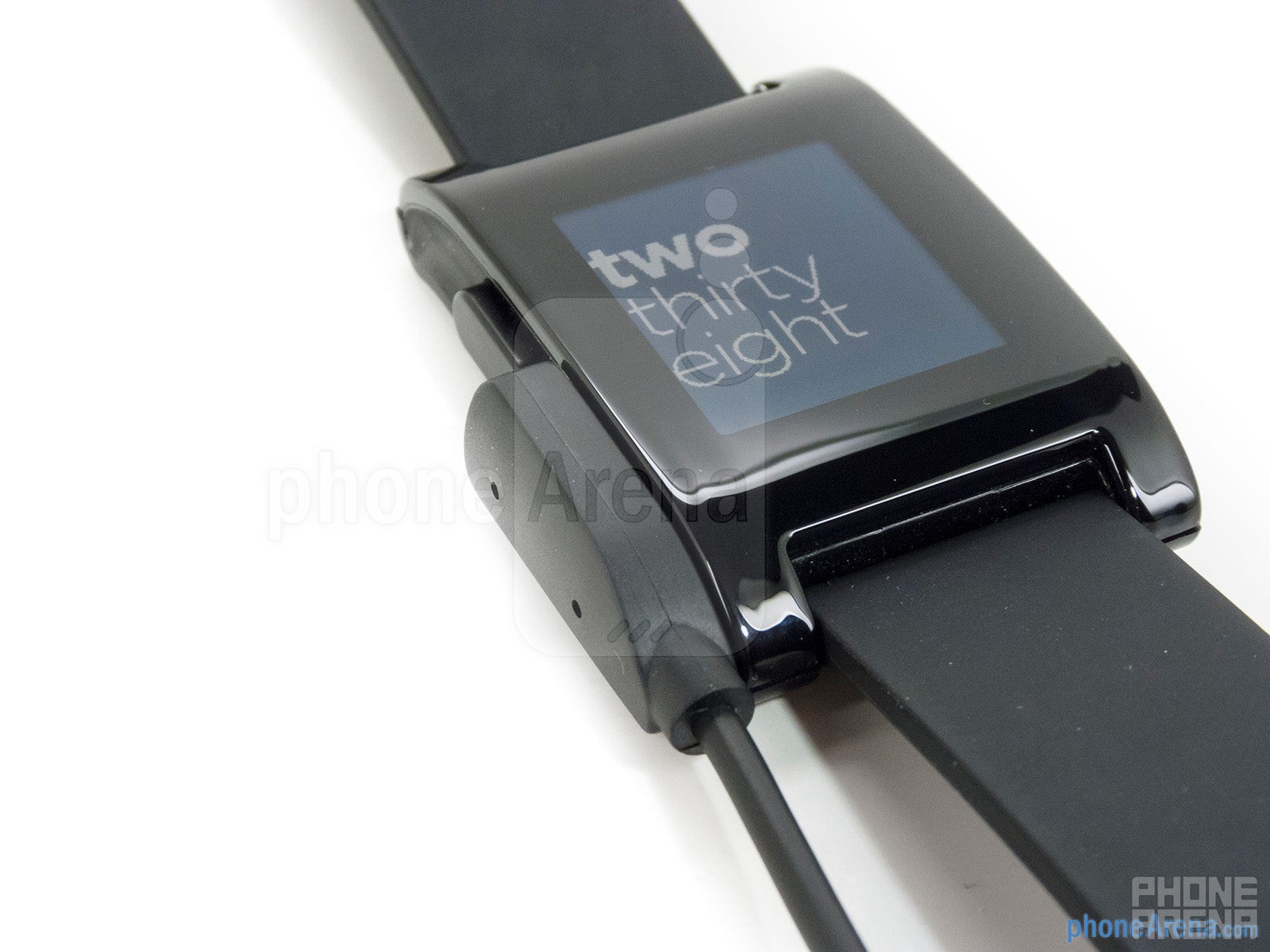
The biggest issue we had was that the watch randomly disconnects at times; sometimes once every couple days, sometimes 3-4 times a day. A simple phone restart always solved the issue, but it is an annoyance that needs to be addressed, especially since the notification icon indicated that Pebble was connected.
The battery life is rated at 5-7 days with average use, and ours lasted 5 full days before dying overnight. There is no battery status indicator until your battery begins to get low, but for us that was about a day before we ran out of juice so we had ample warning. Using Pebble means that your phone must have Bluetooth on at all times, so keep in mind that it will take an extra 5-10% battery hit a day as well. Pebble does have a low-power Bluetooth 4.0 chip which should help things out, but at this time it’s not enabled.
Impressions
Pebble doesn’t do much right now, but at the same time we can’t help but feel that we’re using the future. Perhaps it’s just another case of wanting this tech to be real, but when we wear the Pebble it feels and works so naturally that we can’t help but be impressed. Sure, there are bugs to be worked out and functionality to be added, but it really seems like the base is solid this time. Pebble isn’t a must-have right now, but at the same time we won’t be taking it off our wrists anytime soon.
Watch firmware: v1.8.1
Pebble Smart Watch Video Review:


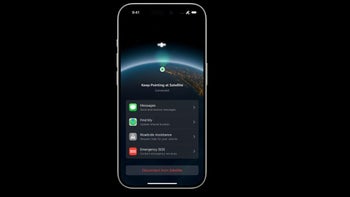





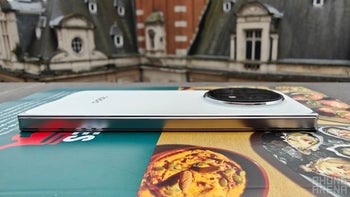

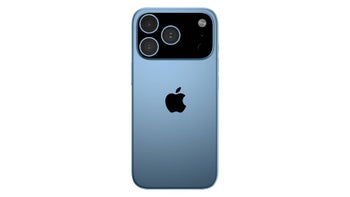
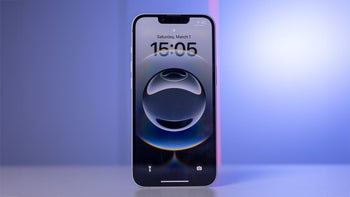

Things that are NOT allowed: